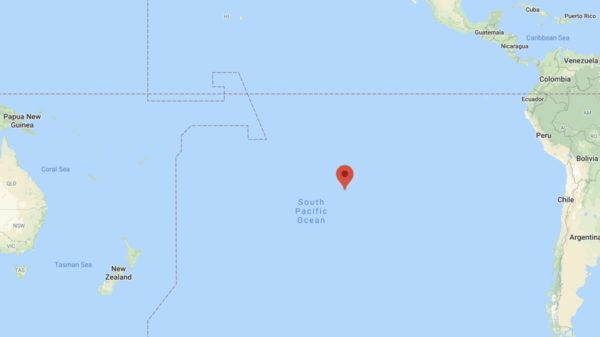The banking industry, for a number of reasons, tends to be slow to adopt new technologies. It also tends to be extremely fragmented, with little compatibility and interoperability between national systems. When you combine the above with the hundreds of currencies in use globally and often complex and restrictive sets of rules and controls surrounding them, transferring money internationally can quickly become a real source of friction. In this article, I share some of my favourite money transfer strategies.
My favourite strategies
I have personally experimented with dozens of different strategies, listed here are those I have found the most useful with the multi-national bank strategy being my favourite and the one I rely on most.
Multi-national banks
If you travel frequently, you will likely have noticed that some banks seem to be everywhere. Citibank, HSBC, Bank of China and Standard Chartered are some of the most common. With many of these banks, it is possible to transfer funds between accounts held with different national units. Some will even process those transfers free of charge (and they will often be instant). If you regularly need to make transfers, between the same countries, this can be a game changer.
I personally use Citibank’s Global Transfer to move funds on a regular basis between my accounts in the US, HK and other countries. I do not use my Citibank account for day to day banking, however, only for international money transfers.
In practice, this is how this strategy is implemented for USD transfers:
TD Bank (US) -local ACH transfer- Citibank (US) -Citibank Global Transfer- Citibank (HK) -local transfer- Bank of East Asia (HK)
(in this example, no currency conversion occurs and there are no transfer fees)
Obviously, this strategy only makes sense if your transfers do not involve a currency conversion as the forex rates the major banks offer are not usually competitive with the likes of Wise and Revolut, let alone IBKR.
Interactive Brokers (IBKR)
For transfers between your own accounts, that involve a currency conversion, Interactive Brokers will in most cases be the most cost effective option (the rates they offer are far better than what Wise, Revolut etc offer). To access this content, please log into your Insiders Club account. If you do not have an account, click here to learn about the benefits of membership.
Fintech
For smaller transfers, and the occasional transfers to third parties, the fintechs can be an excellent option and that is especially true of Wise and Revolut. To minimize fees, you should top up your account and pay for your transfers with a funding source that does not incur a fee and you should initiate the transfers during normal business days (the spreads can often increase during weekends).
Cryptocurrencies
Using cryptocurrencies to transfer money internationally will not work for everyone given the risk and tech savvy required but it could nonetheless be an interesting option for some. It can also be a great way to get around capital controls, sanctions and geographical restrictions. You will need to be careful regarding the banks, however, as in many countries they may freeze or even close accounts that are associated with cryptocurrencies (moving large amounts may also be a red flag with the tax authorities).
Wires (SWIFT, SEPA etc)
This is the most popular method used to transfer money internationally, especially for medium and large businesses. Sending a wire can be expensive and inconvenient, however, especially if you have to physically visit your bank to initiate transfers or if you have to use intermediaries. SEPA is an exception in the world of wires as it is convenient, fast (usually instant) and cheap (often free). In any cases, if you do need to send wires on a regular basis, I recommend opening an account with a bank that offers them free of charge, online and without constant scrutiny (some banks are infamous for asking for invoices, receipts etc whenever a transfer is credited).
Cash
Using actual cash may sound like a strange money transfer strategy but in some cases, it can work pretty well. If you travel regularly between your business locations it can make sense to carry cash on you. Same thing if your business locations are close-by (Hong Kong and Shenzhen, for example). In some cases (undeclared income for example), carrying cash may be your only safe option. Keep in mind that in most countries you will have to fill a tax declaration form if you are carrying more than 10000 USD or equivalent.
Merchant accounts
Using a merchant account as a means to transfer money internationally is both unusual and expensive but can be very useful in some circumstances. For example, you have an undeclared corporate offshore bank account and you want to transfer funds into it. You obviously cannot send a wire or use a money transfer service as that would create a link and moving actual cash around is too expensive (travel costs). In such a situation, you could open a merchant account for your offshore corporation and link it to your offshore bank account. You could then invoice yourself the amounts you wish to transfer and pay the invoices with a credit/debit/anonymous gift card. If your company is properly set up, such a transfer will leave no obvious traces (although it will leave traces). This is a last resort method though as such a transfer can be expensive (2-5%) and resource intensive (merchant account maintenance).
Payment cards
Using debit cards to move money around can work nicely if you or a trusted associate are physically present in the destination country. You or your associate can simply withdraw cash from an ATM using the card and then deposit it locally. You can also provide a debit card to a third party to whom you frequently send money. You then only have to reload the card and they will immediately have access to the funds.
For example: if you bank in the United States but live in Malaysia, you could get a no ATM/FX fee bank account in the US and draw cash from that account in Malaysia using a debit card. You could then either spend the money or deposit it in a local Malaysian bank account.
This strategy also works well for sending money to family members, children etc. Not only is it very easy to implement and manage for both parties but it also allows the sender to monitor activity (for example, you could turn off ATM access for the card, only allowing point of sale transactions thus knowing exactly where your money is spent).


































